News
4 Questions to Ask Yourself When Planning a Tattoo
October 26, 2023
Lamar Street Tattoo Club shares four questions to ask yourself when planning a tattoo or looking for a tattoo parlor in Dallas.
READ MORE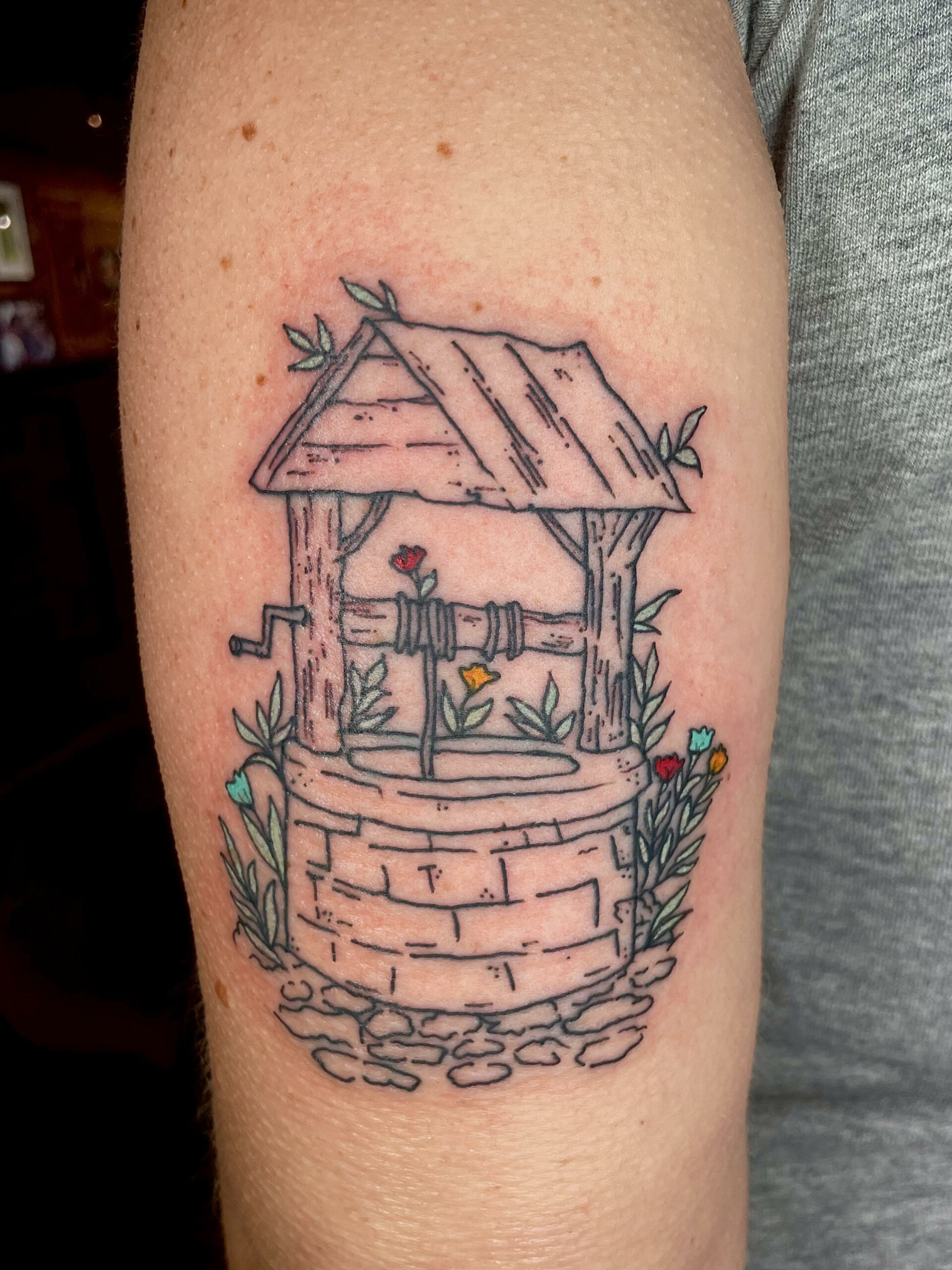
October 26, 2023
4 Questions to Ask Yourself When Planning a Tattoo
As a Dallas-area tattoo parlor, we love to hear that people are planning their next tattoo. It’s a fun and exciting time! The world is your oyster at this stage, and anything is possible.
If you struggle to turn your idea into a tattoo design, you’re not alone. Tattooing is an extensive and diverse field, so it’s no surprise that some people need help planning their next ink. What style should you use? Where do you want it? What’s the significance of it? You might be struggling even to get started.
We’ve found that the below questions can be helpful when you’re looking to plan out your next piece of art. These questions will help your artist be more efficient and ensure you’re prepared when you finally consult a tattoo parlor to plan that new tattoo. Ask yourself these questions to jumpstart the process, and as always, come into our DFW tattoo shop if you need additional help. We’re always happy to talk shop with fellow Dallas tattoo lovers.
Do I Have Anything to Provide for the Artist to Mirror?
Knowing where you want the tattoo is a great starting point, but the more detail you can give your artist, the better. We recommend considering a sample of what you want before discussing it with the artist. The tattoo doesn’t need to be a one-to-one example, but anything you can provide regarding size, style, or color will give your tattoo artist some thoughts to work from.
Any good tattoo artist will provide a draft tattoo for your approval before they put ink to skin, but having thought through exactly what you want and locating samples to leave the artist will help jumpstart this process.
Have I Thought Through My Pain Tolerance?
You don’t necessarily need to be a tattoo expert to know that tattoos come with pain. This pain is often quite manageable, but thinking through your pain tolerance is key to designing a tattoo. Location will be the most significant factor to consider when creating a tattoo. A tattoo on a bony or sensitive body area will come with more pain than a fleshy body part.
Believe us when we say you don’t need to be a tattoo newbie to remember this fact. We’ve seen seasoned tattoo aficionados surprised by how much pain a tattoo on a wrist or rib brings. Again, this is manageable if you’re prepared for it, but it is still essential to consider your pain tolerance when planning.
Have I Researched My Artist?
We strongly recommend researching any tattoo artist you consider using. After all, their work is going to be on your skin forever. It’s important to know they’re the real deal and will leave you with a beautiful piece of art, not an eyesore you’ll regret. A little bit of prior research can save you many problems and make your life a little bit easier. There’s no price for peace of mind; finding the right artist will provide you with more peace.
For one, choosing to get a tattoo through a tattoo parlor is a great first step. It sounds like a no-brainer, but we’ve seen many redo tattoos in our Dallas tattoo parlor. Quite a few of them were the work of amateurs, not professionals, and it shows. Take the time to find a reputable tattoo shop and then ask to see examples of their artists’ work. A tattoo artist can be a talented professional but not necessarily have the specific touch or style you want. That’s completely OK. Take the time to research and find an artist you can feel 100% confident in when underneath their tattoo gun.
Am I Ready to Follow Post Care Instructions?
Finding an artist, designing a tattoo, and then receiving the tattoo does not end when you leave the tattoo parlor. Post care is a critical part of maintaining a tattoo. Without proper post care, you dramatically increase the risk of a tattoo infection, a poor recovery, or a faded tattoo. Post care is relatively simple, but you must be prepared to follow all instructions. Without that discipline, you’re increasing the risk of a poor recovery.
Be prepared to….
- Keep the Area Covered the First Few Days of Recovery
- Apply a Tattoo Specific Cream like Mad Rabbit
- Avoid Water
- Gently Wash the Area Twice Daily
- Don’t Pick or Scratch
- Closely Monitor the Recovering Area
These instructions are not particularly difficult. However, if you know that you cannot resist picking a scab or do not have the time to wash the affected area twice a day, it might be worth delaying going under the tattoo artist’s gun.
Contact Lamar Street Tattoo Club
If you need help, contact Lamar Street Tattoo Club! We’ve been voted the best tattoo parlor in the Dallas-Fort Worth area for a reason: we have some of the most talented artists in all of Dallas! Contact us today or peruse the work of any of our artists.
We’re always happy to weigh in on your tattoo design or make suggestions as needed. Contact us today to make an appointment at the best Dallas tattoo parlor!
Voted Best Tattoo Artist In Dallas
October 16, 2023
Lamar Street Tattoo Club has been voted as Dallas observer’s readers choice for best tattoo artist in Dallas!
READ MORE
October 16, 2023
Voted Best Tattoo Artist In Dallas
Lamar Street Tattoo Club has been voted as Dallas observer’s readers choice for best tattoo artist in Dallas!
Thank you for the awesome opportunity and recognition!
How To Heal a Tattoo Quickly
September 28, 2023
The tattoo artists at Lamar Street Tattoo Club share tips on how to heal a tattoo quickly. Follow these steps for the best result!
READ MORE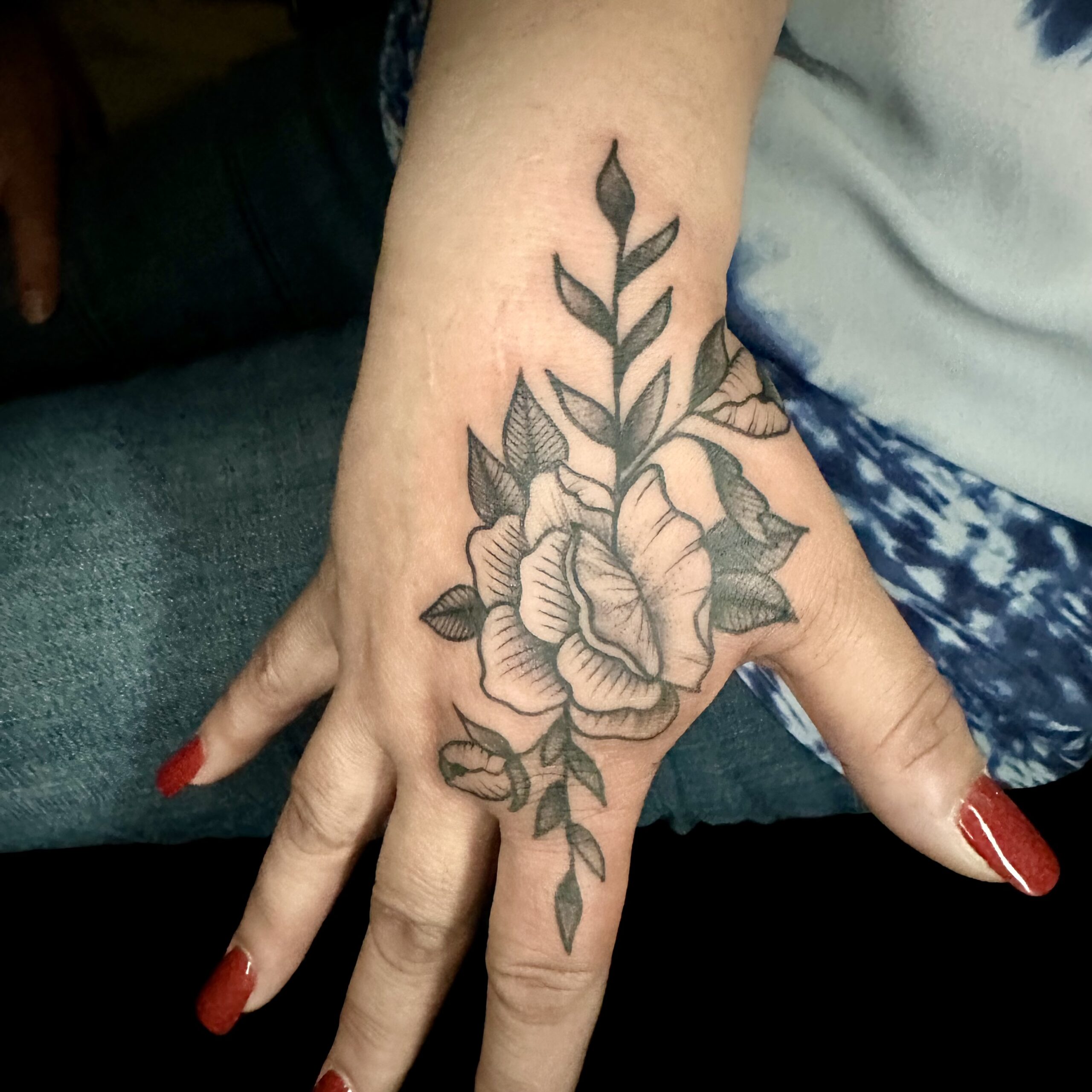
September 28, 2023
How To Heal a Tattoo Quickly
Congratulations, your dream tattoo is finalized! You spent countless hours researching, planning, and preparing for this new piece of ink. Now, all of that hard work has come to fruition! However, this is not the end of the process. In some ways, it’s just the beginning of one of the most essential parts of the process. Healing a tattoo is an often overlooked part of the process, but it is often one of the most critical steps.
Good tattoo aftercare and healing will ensure that your ink remains vibrant and strong for years to come. Poor aftercare dramatically increases the odds of your tattoo fading or becoming infected. Your actions now are crucial for the longevity of your ink, so you must get the aftercare part right!
To help you think through how to heal your new tattoo quickly, Lamar Street Tattoo Club experts weigh in with their favorite post-tattoo tips.
Follow Aftercare Instructions
Your tattoo aftercare instructions are a critical piece of this healing process. We’ve seen plenty of tattoo touch-ups at our Dallas tattoo shop, and each is a little different. However, one throughline unites many of these poorly-healed tattoos. Often, the recipient of the ink did not follow all post-care instructions. When you are healing from a tattoo, take the time to follow all instructions for best results.
There will come a moment when you’ll want to skip an element of your aftercare. Trust us; follow all aftercare instructions to the letter for best results. Your tattoo will thank you.
Be sure to…
- Drink Plenty of Water: Staying hydrated is imperative for healing.
- Clean Well: Proper cleaning is a must.
- Keep the Tattoo Covered: This is essential for basic wound care.
- Maintain Relatively Consistent Weight: Sudden weight gain or loss will distort how the ink heals, so if your tattoo is healing, it’s probably best to hold off on that crash diet for a few weeks.
Stay Out of the Elements
This can be an overlooked aftercare tip. Exposure to water and sunlight can wear down your tattoo and contribute to fading. We recommend covering the ink when showering or in direct sunlight, especially for the first few days. Again, this is not to say you should lock yourself inside while recovering from a tattoo. However, avoiding direct sunlight and covering the wound is best practice. Now, you will need to wash your tattoo frequently, so balance is key. If you have a question about when and where you should keep your tattoo covered and for how long, feel free to stop by our shop on Lamar Street to discuss!
Use the Right Balm
When you get a tattoo, the afflicted area undergoes many changes. The area will leak fluid, scab, and become itchy. To counteract these symptoms, keeping the impacted area hydrated is essential. Doing so will aid in the healing process, keep the area from itching, and reduce the odds of infection. However, while it is necessary to use products, it is also important to know that not all products are created equal.
In a past blog, we have mentioned how important it is to use the correct balm when tending to a recovering tattoo. Petroleum jelly and other over-the-counter products might be cheaper, but they just aren’t up to the task of healing your skin. These products often contain harsh chemicals that can actually damage your ink.
We recommend moistening the tattoo with Mad Rabbit Soothing gel to relieve the itchiness and scratchiness of a recovering tattoo. Spread it in a thin, even layer across the tattoo and apply as necessary with very clean hands. This cooling gel works fast to alleviate irritability and itchiness. A combination of anti-inflammatory and anti-aging ingredients calms compromised skin and helps its moisture barrier bounce back.
Once the tattoo has healed, you can switch from the Soothing Gel to the Mad Rabbit Replenishing Body Lotion, and for a boost in boldness and vibrancy, add a balm in tandem with the Replenishing Body Lotion. This will expedite your tattoo’s healing process.
Click the link below to visit Mad Rabbit’s website, and be sure to use the code “LSTC” for a percentage off of your order!
Consult With The Experts At Lamar Street Tattoo Club
Are you planning out a new tat? Consult with the experts at Lamar Street Tattoo Club! We’re one of the top Dallas-area tattoo shops, and we’d love to discuss your next piece of art!
Our artists are standing by to consult with you on your next tattoo! We’ve been voted one of the best Dallas tattoo shops for a reason; we have some of the best artists in DFW, and their work speaks for itself!
- Walk-Ins are Welcomed, Appointments are Preferred
- Award-Winning Tattoo Shop
- Gift Cards Available
- Laser Tattoo Removal Available
Ready To Talk About Your Next Ink? Contact Lamar Street Tattoo Club Today!
Tattoo Balm vs. Petroleum Jelly for Tattoo Aftercare?
August 31, 2023
The experts at Lamar Street Tattoo Club share their thoughts on tattoo balm vs. petroleum jelly for tattoo aftercare.
READ MORE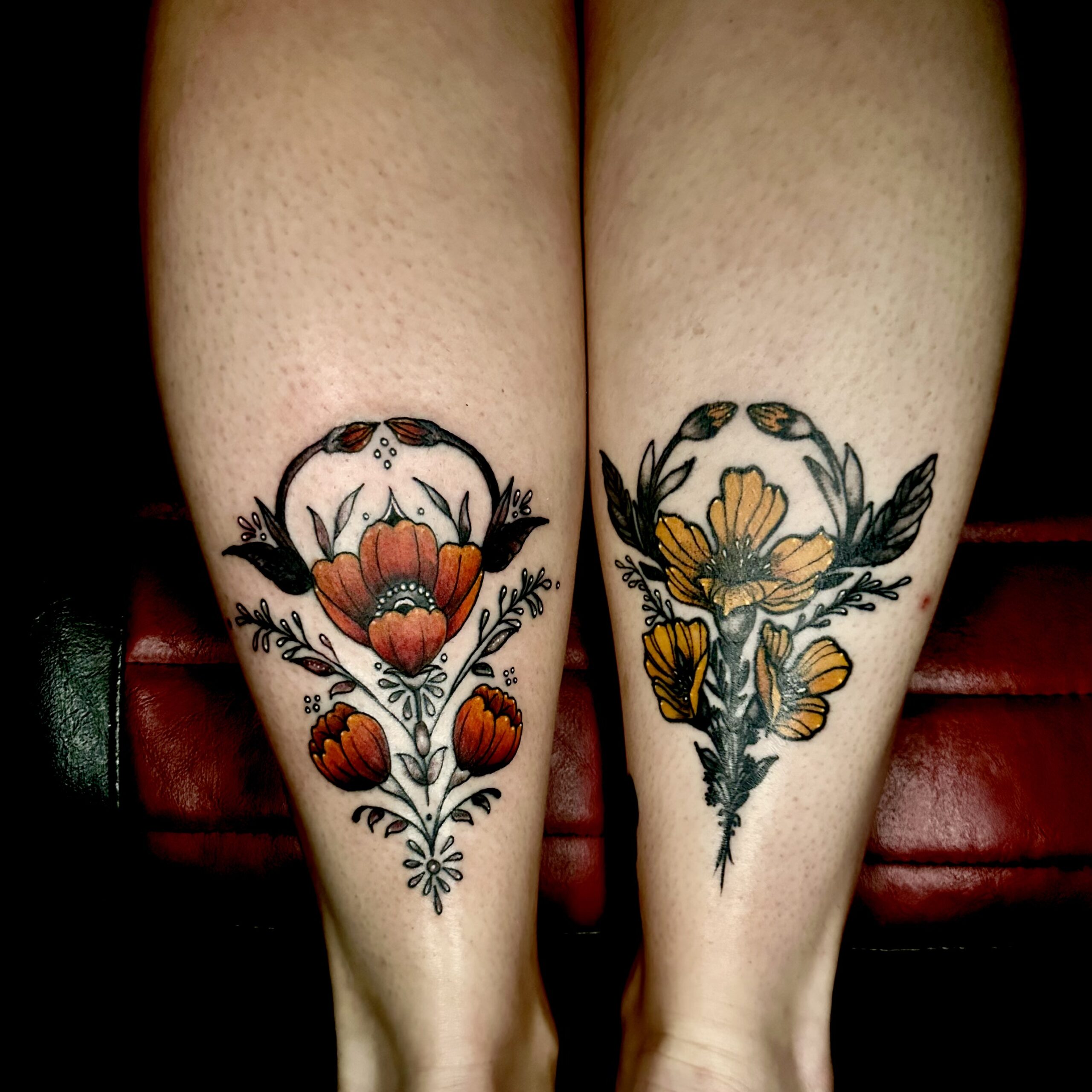
August 31, 2023
Tattoo Balm vs. Petroleum Jelly for Tattoo Aftercare?
You spent a lot of time planning your tattoo. You did your homework and played around with different styles and fonts. You researched the Dallas area tattoo shop you were going to entrust this piece of art to. Congratulations; all of that hard work has paid off, and you now have a fresh new bit of ink on your person!
However, now that the ink is drying, so to speak, it’s time to pivot to an important and critical piece of the process; aftercare. Specifically, we’d like to discuss what you should be putting on a finished tattoo from a hydration and longevity perspective.
Some tattoo enthusiasts prefer to put petroleum jelly or other hydrating creams from the local pharmacy on their tats. The rationale is that these cheap, accessible, and common products will do the job just as well.
In our experience, there is a lot more to tattoo aftercare to consider, which is why we put our thoughts together in this blog! Read on to learn more about what you should be putting on your tattoos and why.
Read on To Learn About Mad Rabbit Tattoo Balm vs. Petroleum Jelly!
The Importance of Tattoo Balm
Tattoos, as pieces of art, are delicate and sensitive to small changes. When you consider that these pieces of art are created on human skin, it becomes clear that aftercare is vital. To help with the healing process, tattoo balm will be applied under the bandage when a tattoo is complete. This tattoo balm will need to be reapplied to the affected area in the weeks ahead for best results. Outer layers of skin will heal within a few weeks; deeper layers of skin might take 4-6 months to heal completely.
When your tattoo is healing, it’s imperative that you cover the affected area with tattoo balm. This substance will help keep the impacted area hydrated and will reduce the odds of scabbing and itching. In the long run, this also helps the tattoo’s aesthetic qualities. Proper aftercare with a solid tattoo balm keeps tattoos looking vibrant, full, and healthy on your body for longer.
At At Lamar Street Tattoo Club, we always recommend Mad Rabbit for your tattoo aftercare.
Tattoo Aftercare
Clearly, using some sort of balm on a healing tattoo is necessary for the best results. However, many tattoo enthusiasts look for a shortcut and shun tattoo balms for more common household salves, like petroleum jelly or another over-the-counter hydrating lotion. Usually, the low expense and the ease of access entice these tattoo lovers.
The problem is that you get what you pay for. Tattoo balms such as Mad Rabbit are specifically designed for tattoo recovery and preservation. Petroleum jelly and other pharmacy products are not. We’ve seen so many tattoo lovers invest a lot of time and money into an elaborate and gorgeous piece of art and then turn around and use petroleum jelly in the aftercare process. It’s almost like parking an imported luxury sports car underneath Bubble Wrap instead of in a garage. It’s barely better than nothing, and you would have been better served using a purpose-built solution. Your tattoo is an intricate and complicated piece of artistic expression, and it’s critical that it heals properly.
The simple fact is that most over-the-counter lotions and petroleum jelly just are not up to the task. Many contain harsh chemicals for fragrance, which makes the smell of these products more palpable to humans. However, these chemicals can irritate the skin. A good-smelling product isn’t always an effective product, at least not when it comes to tattoo aftercare.
This really is the problem at the heart of using most over-the-counter products. They simply just are not designed for tattoos. This means that using them drastically increases the risk of itching, scabbing, infection, and irritation. While a good tattoo balm will cost a bit more than petroleum jelly, it is well worth it, in our opinion. If your recovering tattoo does get infected or scabs over, you’re likely going to need to come back to our Dallas tattoo shop for a touch-up or tattoo redesign.
This isn’t merely an inconvenience and extra cost. Depending on the severity of the infection, you could even require medical care. Neither of those are great outcomes, especially if using tattoo balm could prevent those problems altogether.
Contact Lamar Street Tattoo Club
In all of the years we have designed tattoos in Dallas, we have noticed one key trend. Poor tattoo aftercare dramatically increases the odds that any patron will come back to visit our Dallas tattoo shop for a touch-up. In our experience, choosing a tattoo balm over petroleum jelly is a key part of that aftercare. While it might seem like a prudent decision to choose the cheaper option in the short term, it likely will not be in the long run. You spent a lot of time, money, and effort on your tattoo. Don’t ruin the aftercare with petroleum jelly.
Take it from the experts here at Lamar Street Tattoo Club…choose a reputable tattoo balm over an over-the-counter solution. Your ink (and your friendly neighborhood Dallas tattoo artists) will thank you.
Contact Our Artists for More!
How to Prevent a Tattoo Infection
July 20, 2023
Thinking about getting a new tattoo? Make sure you’re properly prepared by learning how to prevent a tattoo infection from starting.
READ MORE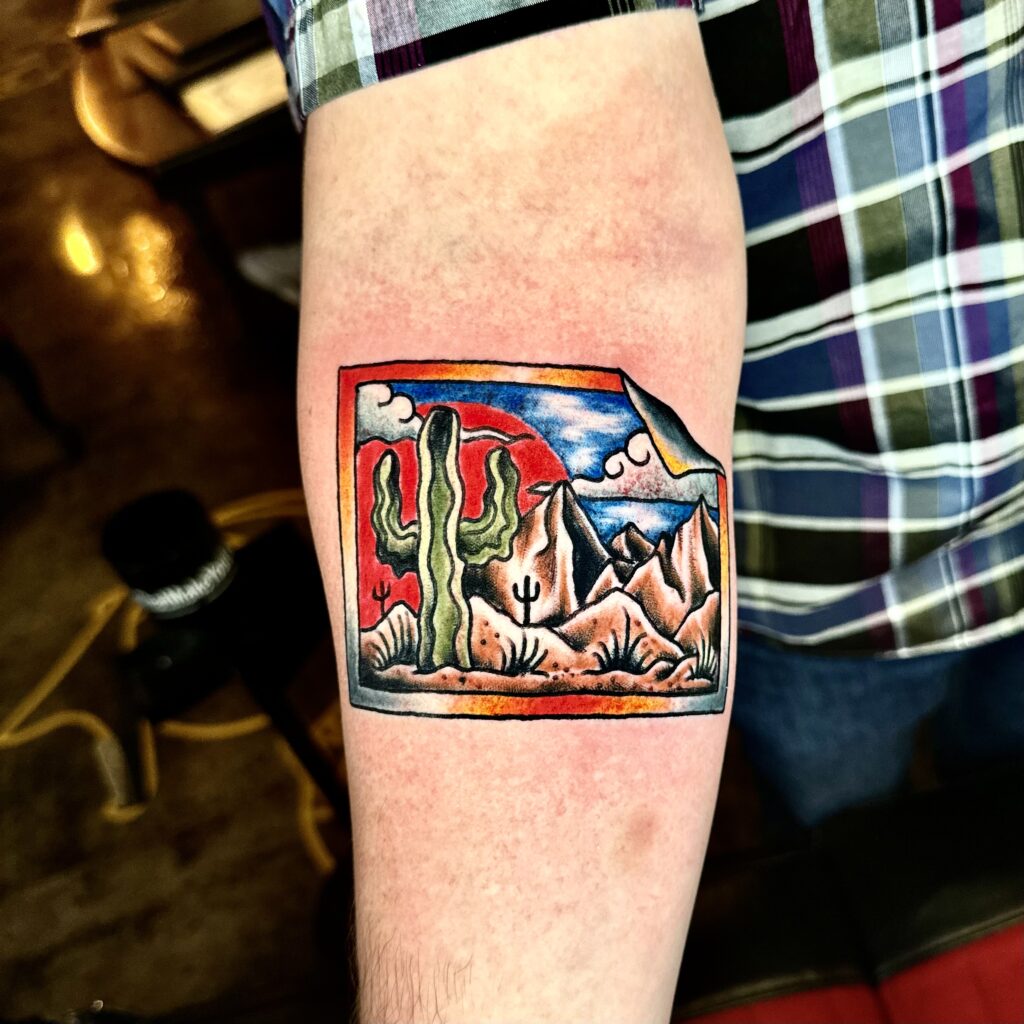
July 20, 2023
How to Prevent a Tattoo Infection
We love the art of tattooing! It’s a beautiful and exquisite art form, and we absolutely adore the history, design, and calligraphy that goes into every tattoo we design here at Lamar Street Tattoo Club.
However, while we do love tattooing, the risk of a tattoo infection is worth discussing. The last thing you want after designing a beautiful and unique tattoo on your body is a post-tattoo infection, both for the sake of your health and the integrity of the tat. To help you counteract this and be prepared, the tattoo artists at Lamar Street Tattoo Club put together some thoughts on how to prevent a tattoo infection.
Read on to learn more!
How Common Are Tattoo Infections?
Before we begin, it is worth pointing out that tattoo infections are fairly rare. The industry has learned a lot about health, hygiene, and post-care in the last few decades. The days of sailor tattoos with barely sanitized needles went out of fashion with the nineteenth century. Modern tools and practices reduce the risk substantially.
Now, tattoo infections do occur. There is no denying that, but the reason why is usually not due to the tattoo industry. Most tattoo infections arise from either a shady tattoo shop or shoddy tattoo aftercare. Your friend who “totally used to design tats” might be a great friend, but they’re not a good choice to put a permanent piece of ink on your body or walk you through the post-tattoo care process. A permanent piece of art, like a tattoo, necessitates professional expertise. If you choose the right tattoo parlor and follow all post-care instructions, your risk of a tattoo infection is basically nil.
How to Prevent a Tattoo Infection
Clean the Area
The most common cause of a tattoo infection is an unclear workspace or tattoo equipment. Non-sterilized tools dramatically increase the risk of a tattoo infection, and this is, not surprisingly, the easiest way for a tattoo infection to form. You’re putting ink into your body and leaving an area that needs to heal. A dirty tool is the most surefire way to cause post-tattoo problems.
This is also one of the reasons why you should never receive a tattoo from an amateur tattoo artist. Tattoo shops, by and large, have well-established sterilization and cleanliness policies to prevent this and ensure that you’re receiving your ink from a clean and well-maintained tool. That is not the case with your co-worker’s nephew’s best friend’s fiancee, who wants to practice their tattoo skills on you. Trust us; the vast, vast, vast majority of tattoo infections, poorly-designed pieces, and bad tattoo removals we see in our Dallas tattoo shop come from amateur tattoo artists. Leave the amateurs for Stand Up Night at the local comedy club; trust your tattoo to an industry expert.
Find a Reputable Tattoo Shop
Choosing the right tattoo shop is far and away the easiest part of this equation to prevent a tattoo infection. If you do your homework and find the right Dallas tattoo parlor for your unique needs, your risk of any post-care problems drops substantially. A reputable tattoo shop will follow pertinent regulations and maintain a clean space, but they also will be able to answer your questions. Review their work, talk to their tattoo artists, and ask for referrals as needed. You’re creating a permanent piece of art on your body. Make sure that you’re entrusting that artwork to only the best.
Post-Care
The easiest way to prevent a tattoo infection is really a simple one. Follow all post-care instructions. That’s it! Straight-forward, right?
When you visit our Dallas tattoo shop, you’ll receive specific instructions about post-care. Remember, while a tattoo is a beautiful piece of art, it’s also a healing piece of art during those first few days after getting your new ink. Post-care is vital for both the sanctity of the art and your health.
Be sure to…
- Cover the tattoo until healed with plastic.
- Wash frequently
- Cover with Mad Rabbit Repair
- Avoid itching
Visit Lamar Street Tattoo Club
When you’re ready to design the tattoo of your dreams, turn to Lamar Street Tattoo Club! We’ve been voted The Best Tattoo Shop In Dallas for a reason! Safety, hygiene, and clear post-care procedures are bedrock principles of how we do business in our tattoo shop, and we want to help make your next piece of ink a beauty.
The right artists make all of the difference in the world, and we swear by the work that our artists do. We encourage you to learn more about our artists, their histories, and their styles, and then come experience for yourself!
Remember, you get what you pay for. In the age of instant gratification, it can be tempting to think that an unlicensed tattoo artist is the way to go. If you really want to avoid tattoo infections, bad experiences, and regrettable ink, visit our shop on historic Lamar Street. Your next tat will be a permanent part of you; make sure that you’re entrusting that ink to a seasoned and safe tattoo shop.
Four 2023 Tattoo Trends To Be Aware Of
June 22, 2023
Lamar Street Tattoo Club shares some of the top 2023 tattoo trends that they are paying attention to.
READ MORE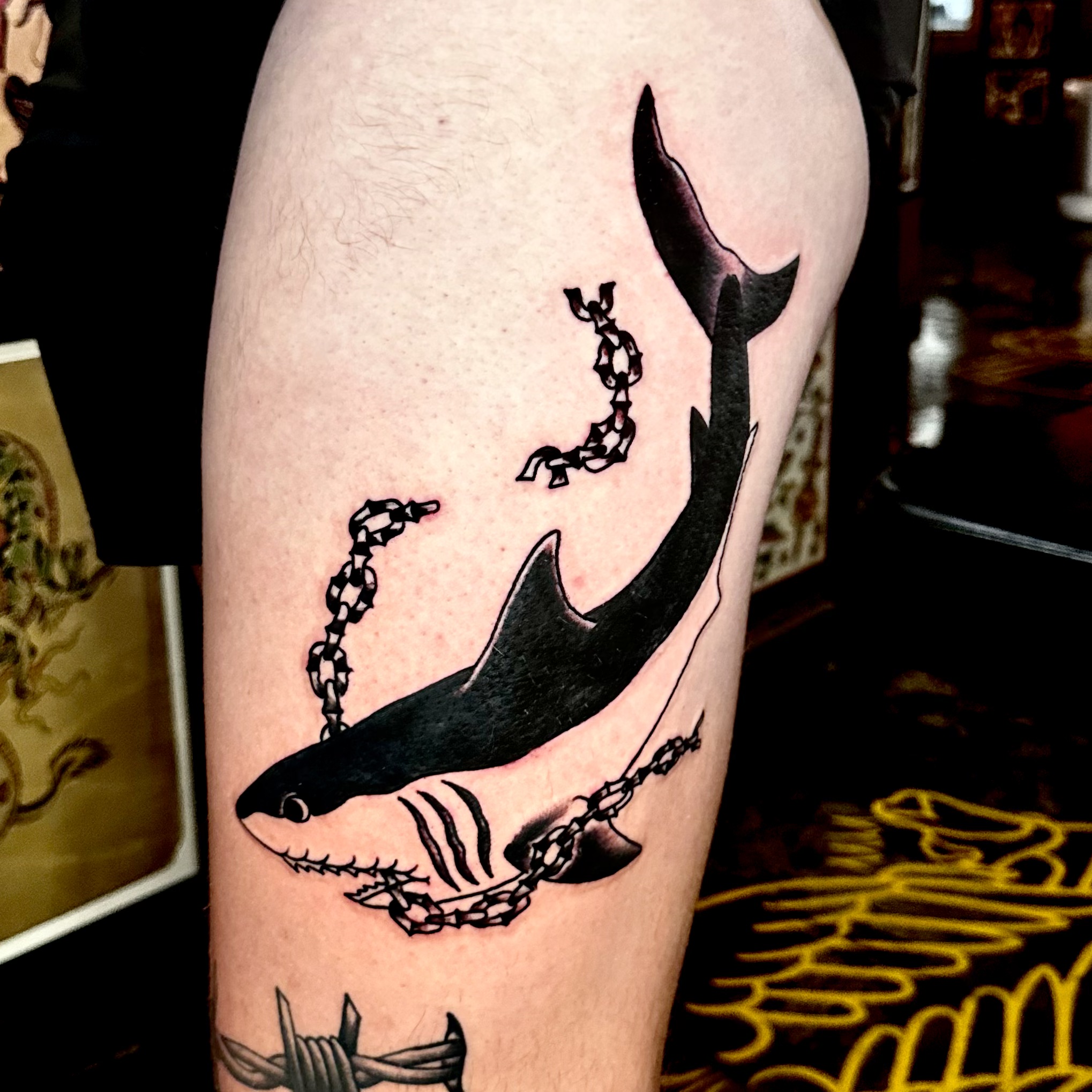
June 22, 2023
Four 2023 Tattoo Trends To Be Aware Of
We’ve seen many different things rise and fall in popularity in the tattoo world over the years. People are unique, and their tattoos are no different. In all of our time as a tattoo shop in Dallas, we have seen it all.
These styles, however, are becoming more popular in the tattoo world, both within our Dallas tattoo shop and throughout the broader tattoo community. It’s hard to say if these tattoo trends will continue into 2024 or if their moment in the sun will run out before then. However, these are all interesting examples of the art form, and we hope this blog gives you some ideas for your next tat. Who knows? Maybe we’ll even see you in our Dallas tattoo shop with one of these pieces in the future.
Read on to Learn about Tattoo Trends in 2023!
Tattoo Trend 1: Micro Tattoos
As tattoos have become more common, employers and educators have become more accepting of tattoos in the workplace and hall of higher education. However, some tattoo enthusiasts are opting for tattoos that are visible to others but barely so. A few years ago, most of our patrons either chose clearly visible tattoos or tattoos that standard workplace or school outfits would cover up. Now, we’re seeing more and more micro-tattoo requests. These small pieces are visible to others, but often barely.
Common locations include…
- Back of Neck
- Behind Ear
- Wrist
- Finger
- Knuckle
Tattoo Trend 2: Script Tattoos
This tattoo trend has never really gone out of style, per se. There’s some evidence that ancient Egyptians may have tattooed hieroglyphics on their skin, for instance, so script tattooing might be one of the oldest styles in the world. Clearly, script tattoos are an important part of the history of the art form, so we wouldn’t say that script tattoos are making a comeback because, well, they never really left! Again, not to say that geometric and animal-inspired tattoos are falling out of style. We are, however, seeing an uptick in the number of script tattoos we’re helping design and create.
Just be sure to know which script you want or are looking for. Each script has its own style, history, and use case, and the more specific you are, the better. Our friendly tattoo artists are able to offer their expert opinions if needed and help you design the tattoo of your dreams.
Common styles include….
- Hieroglyphics
- Cursive
- Block Text
- Overlapping Text
- Faded Text
Tattoo Trend 3: Finger Tattoos
Finger tattoos used to be uncommon. The reasons why were fairly simple. The skin of your fingers is delicate, for one, so they can be uncomfortable. Your hand’s skin is delicate, and that impacts how you experience the artist’s gun. Also, that same fragility means that the ink can fade quicker on the fingers versus other parts of the body. These reasons used to limit the number of finger tattoos.
However, finger tattoos are gaining popularity, and we can see why. They’re small, for one. While finger tattoos also are visible in the workplace, they are extremely subtle. This combination of subtlety, size, and simplicity has helped finger tattoos grow in popularity in the last few years, and we expect to see that trend continue.
Tattoo Trend 4: Minimalist Tattoos
We love a large and intricate tattoo, don’t get us wrong. We’ve had the honor of developing some amazing pieces over the years, and some of those have been detailed and all-encompassing tats. However, we also love a good minimalist tattoo as well! There’s something about the subtlety of a minimalist tattoo that can be understated but beautiful. Apparently, many tattoo aficionados agree, as minimalist tattoos are beginning to make a resurgence.
The reasons why are very understandable. Minimalist tattoos can be less expensive, depending on how you utilize them, and opting for a simpler design often not only saves you money but time in the tattoo artist’s chair. They also tend to be a little smaller and thus can be concealed easier
We’ve seen a wide variety of minimalist tattoos over the years. Some common examples include…
- Animal Or Natural Shapes
- Geographic Tattoos
- Meaningful Objects
Whatever You Want to Trend
Here’s the thing. These styles are what we’re seeing in the marketplace. However, they’re just that: trends. Every tattoo is a unique piece of art, a specific and special manifestation of your story. Whatever tattoo you want to make the next trend is right if you think it’s right.
And that’s where Lamar Street Tattoo Club enters the picture. We’re a Dallas-based tattoo shop, and we’d love to discuss your next piece of ink. Each tattoo is a beautiful and unique testament to who you are and your story. We’d love to help you research, design, mock-up, and create that next tattoo.
Our story is pretty simple; we’re passionate about tattoos! Our Dallas, TX tattoo artists have been designing tats in the area for years, and they love their craft. That love of the art form makes us one of the top tattoo shops in Dallas, and we’d love to help you through the process.
If you still need more convincing, explore our artist’s work here.
Call us today at 972.863.3518 To plan your next bit of ink!

